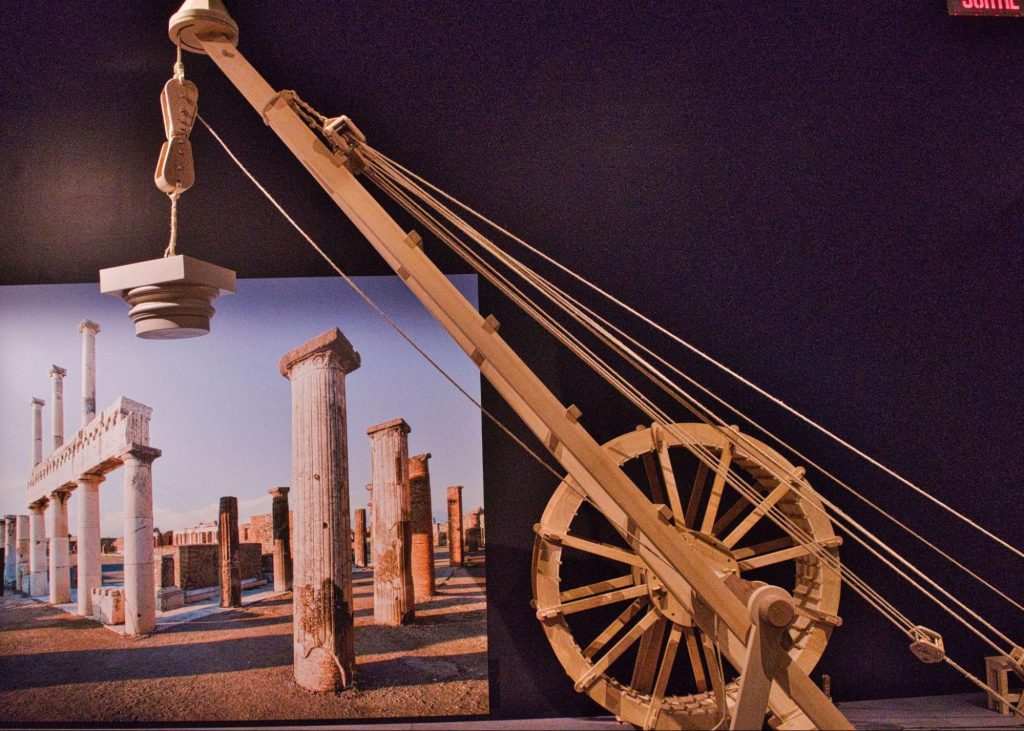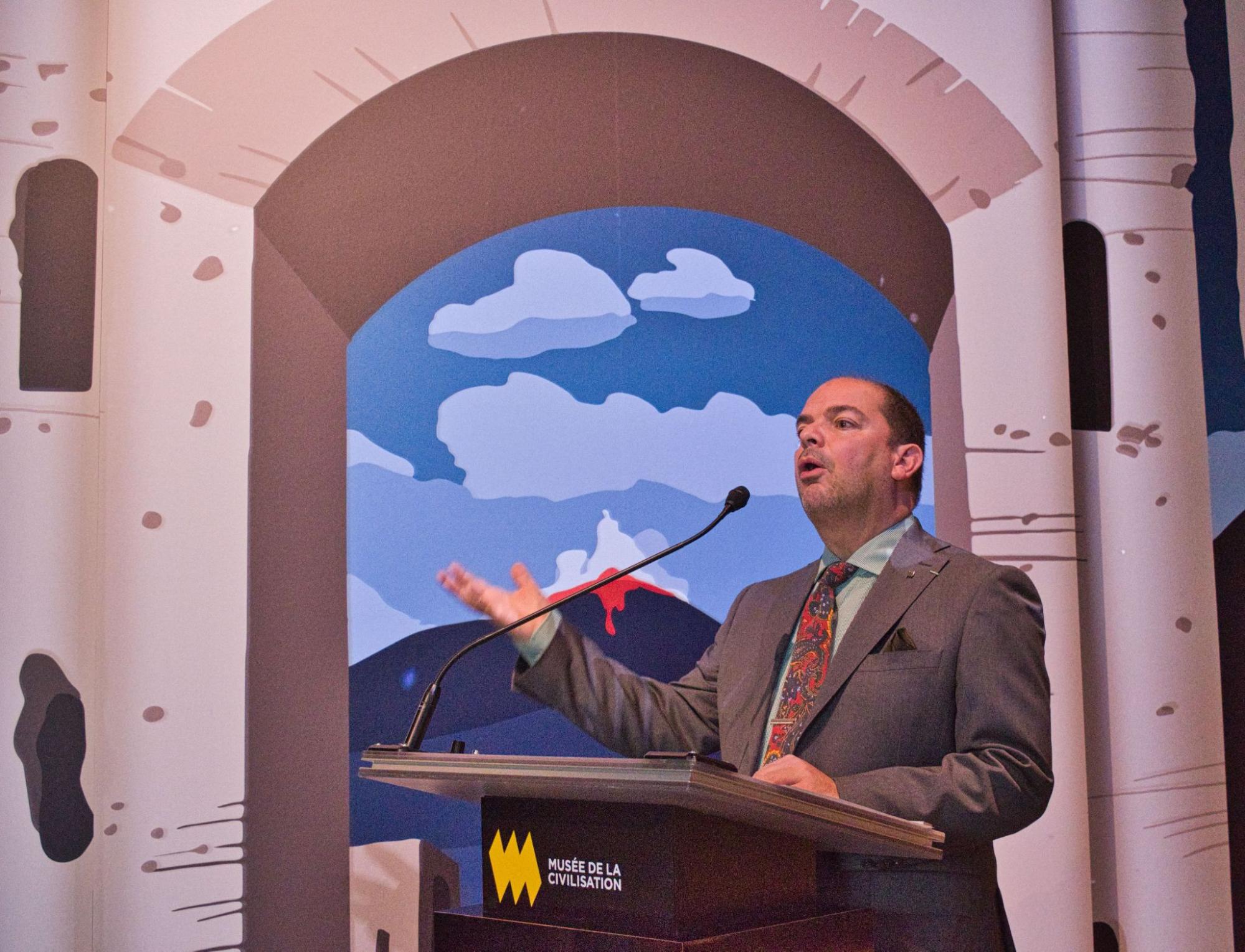Cassandra Kerwin
cassandra@qctonline.com
The Musée de la civilisation de Québec (MCQ) opened Pompeii: Immortal City on Nov. 18. Visitors have until Sept. 11, 2022, to learn about this once-thriving Roman town that was suddenly buried under lava and ashes spewed by Mount Vesuvius in AD 79. Frozen in time for eternity, the tragic end to the lives of the people who lived there has fascinated experts and the general public alike for centuries.

Stepping into the exhibit, museum-goers travel through time to the southwest coast of Italy in the first century. They are safely guided by a Pompeian family, thanks to the audio guide which is an integral part of the exhibit. Visitors must wear headphones, which are available on loan at the entrance for no extra charge, to fully enjoy the experience.
The seven zones of the exhibit are filled with 110 artifacts on loan from the National Archaeological Museum of Naples. Visitors will learn about the techniques used to rebuild the city after the disastrous earthquake of AD 62, and how artisans harnessed natural resources to restore their thriving city. Then, 17 years later, Mount Vesuvius surprised them and buried the city under five metres of debris. Visitors can relive this natural disaster through a multisensory experience in one section.
Thanks to the early accounts of Pliny the Elder, who died trying to rescue victims during the eruption, and his nephew Pliny the Younger, who survived, stories of the Pompeian disaster were passed down, but they stayed in the realm of legend until human remains were discovered on the site in the 18th century.
Archaeologists, historians and researchers at the Museo Galileo in Florence, along with their colleagues at the Archaeological Park of Pompeii and the National Archaeological Museum of Naples, have been piecing the Roman city back together ever since. Four copies of plaster moulds of victims’ bodies are on display at the MCQ, revealing their final resting positions and facial expressions. Before exiting the exhibit, visitors can test their archaeological skills and knowledge at an interactive motion-sensitive table.
“It is a great privilege to offer our visitors an exhibition with such rich historical symbolism and deep meaning. The artifacts take us on a veritable journey through time, thanks to an ingenious and strikingly realistic technological presentation that is focused on people. This is a flagship exhibition that solidifies the Musée’s position on the international scene. We expect it will boost Quebec’s cultural, economic and tourism recovery after these difficult months,” said Stéphan La Roche, CEO of the MCQ.
“This is absolutely a wonderful exhibit. You truly get a sense of the final days and minutes of Pompeii, especially with the five-metre-tall column of debris and the multisensory experience,” said museumgoer Chantale Talbot. “You see how advanced their civilization was and how they thrived in the arts, sciences, crafts and urban development. We have a lot to learn from them.”
For more information, visit MCQ.org.

 Stéphan La Roche, CEO of the MCQ, opens the latest exhibit Pompeii: Immortal City, complete with 110 artifacts from Italy, an interactive experience and an audio guide. Photo by Cassandra Kerwin.
Stéphan La Roche, CEO of the MCQ, opens the latest exhibit Pompeii: Immortal City, complete with 110 artifacts from Italy, an interactive experience and an audio guide. Photo by Cassandra Kerwin.